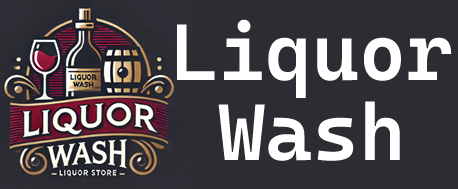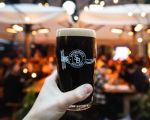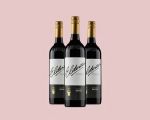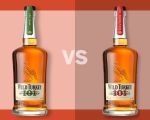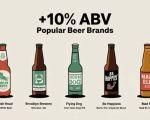The Art of Cocktail Mixology: Crafting Perfect Cocktails at Home
My journey into cocktail mixology began on a warm summer evening when I decided to try making a cocktail at home. I had always admired the work of bartenders who could create beautiful and complex drinks with such ease. But as I attempted my first cocktail, I quickly realized that there was much more to mixology than simply following a recipe. The true art of cocktail mixology involves understanding the ingredients, the techniques, and the creativity needed to craft a drink that’s both delicious and visually stunning.
Over the years, I’ve honed my skills in the art of cocktail mixology, experimenting with different ingredients, techniques, and garnishes. I’ve learned that mixology is not just about shaking or stirring—it’s about balance, creativity, and a deep understanding of how flavors work together. In this article, I’ll take you through the fundamentals of cocktail mixology, share some tips and tricks I’ve picked up along the way, and help you create cocktails that will impress your friends and family.
1. What is Cocktail Mixology?
Cocktail mixology is the art and science of crafting cocktails. It’s not just about mixing alcohol and mixers; it’s about understanding how different flavors interact and how to balance them to create a harmonious drink. While bartending involves serving drinks, mixology is about creating a drink that excites the palate and offers a memorable experience. When I first started, I thought mixology was all about shaking up a few ingredients, but over time I learned that it’s much more intricate than that.
Mixology requires knowledge of the different types of spirits, liqueurs, syrups, bitters, and garnishes used in cocktails. It’s also about understanding the role of ice and how to use different techniques like stirring, shaking, muddling, and garnishing to enhance the drink. I quickly realized that becoming a skilled mixologist involves a combination of creativity, technique, and an appreciation for the history of cocktails.
1.1. The Difference Between Bartending and Mixology
Many people use the terms “bartender” and “mixologist” interchangeably, but there is a distinction. While bartenders typically focus on serving drinks and ensuring a smooth flow of service, mixologists are more focused on the art and craft of cocktail creation. Mixologists take pride in their ability to create unique and innovative drinks, often experimenting with new ingredients and techniques to surprise and delight their customers.
For example, when I first visited a cocktail bar that specialized in mixology, I was blown away by the creativity of the drinks. The bartender didn’t just mix a few standard ingredients; he carefully selected each element to create a drink that was balanced and exciting. The experience of sipping on a handcrafted cocktail, with flavors that I’d never tasted before, was unforgettable. That’s the essence of mixology—it’s about creating an experience, not just a drink.
2. The Essential Tools of a Mixologist
To start crafting great cocktails at home, I learned that having the right tools is essential. A few well-chosen tools can elevate your cocktail game and help you execute your mixology skills with precision. Here are the must-have tools for any aspiring mixologist:
2.1. Shaker
The shaker is one of the most iconic tools in mixology. It’s used to mix ingredients quickly and evenly, and it’s essential for cocktails that contain fruit juices, syrups, or egg whites. There are two main types of shakers: the Boston shaker (a two-piece set) and the cobbler shaker (a three-piece set). I started with a cobbler shaker because it’s easy to use and comes with a built-in strainer, which is perfect for beginners.
When I first used a shaker, I was surprised by how much effort it took to shake a cocktail properly. It’s not just about shaking it around—there’s a technique to it. I learned that the best way to shake is to hold the shaker with both hands and shake it vigorously for about 10-15 seconds, ensuring that all ingredients are well-combined and chilled. The result is a perfectly blended drink with the right texture and flavor.
2.2. Jigger
A jigger is a small measuring tool used to ensure the right proportions of alcohol and mixers in your cocktail. Precision is key in mixology, and using a jigger helps you maintain consistency. In the beginning, I made the mistake of eyeballing measurements, but as I got more serious about cocktail-making, I learned that even small variations in measurements can drastically affect the taste of the drink. With a jigger, I was able to create balanced cocktails with the right alcohol-to-mixer ratio every time.
2.3. Muddler
The muddler is used to crush ingredients, like mint leaves or fruit, to release their flavors. It’s an essential tool for cocktails like the Mojito or the Old Fashioned. I found that muddling ingredients properly can make a huge difference in the taste of the cocktail. For instance, muddling fresh mint releases its oils and creates a vibrant, aromatic base for a Mojito, while over-muddling can result in a bitter taste. With practice, I learned how to muddle gently and evenly to get the perfect balance of flavors.
2.4. Strainer
When I first started mixing cocktails, I didn’t fully understand the importance of a strainer. After shaking a cocktail, the strainer helps filter out ice, seeds, and other unwanted bits, leaving behind a smooth, clean drink. There are different types of strainers—such as the Hawthorne strainer or the fine mesh strainer—and depending on the type of cocktail, I learned that using the right strainer is crucial to achieving the perfect texture.
3. Key Mixology Techniques
To truly master the art of cocktail mixology, I had to learn several key techniques that make a significant difference in the final drink. Here are the essential techniques that every mixologist should know:
3.1. Shaking
Shaking is used to mix and chill ingredients quickly, especially when the drink contains juices, egg whites, or dairy. The goal is to create a smooth, well-blended drink with a nice froth. I’ve learned that shaking properly can create a more textured drink, and the key is to shake hard for 10-15 seconds, making sure the ingredients are thoroughly combined and cold.
3.2. Stirring
Stirring is used for cocktails that don’t require aeration, such as the Martini or the Manhattan. Stirring gently and slowly with a bar spoon ensures that the ingredients are well-mixed without adding air or froth to the drink. I learned that stirring properly helps maintain the clarity and smoothness of the cocktail, which is especially important for drinks that require a more refined presentation.
3.3. Muddling
Muddling is an essential technique for extracting the flavors of herbs, fruits, and spices. It’s used in drinks like the Mojito or the Caipirinha. I quickly realized that muddling can make or break a cocktail—too much pressure or over-muddling can lead to a bitter taste. By gently muddling the ingredients, I was able to extract just the right amount of flavor without compromising the drink’s balance.
4. Popular Cocktails and Their Mixology Techniques
To practice my mixology skills, I started by mastering a few classic cocktails. Each cocktail required a different technique, and learning these drinks helped me understand how flavors work together and how different techniques affect the final product.
4.1. The Mojito
The Mojito is a refreshing cocktail made with rum, lime, sugar, mint, and soda water. To make a Mojito, I muddle the mint leaves and sugar to release the mint’s oils, then add lime juice, rum, and ice. The result is a bright, invigorating drink that’s perfect for summer. I learned that the key to a good Mojito is balancing the sweetness of the sugar with the tartness of the lime, while ensuring the mint flavor is present without being overpowering.
4.2. The Old Fashioned
The Old Fashioned is a timeless cocktail made with whiskey, sugar, bitters, and a twist of citrus. I found that the Old Fashioned requires precise stirring to ensure that the flavors are properly integrated. The bitters provide a complex flavor profile, while the sugar balances the drink’s richness. A simple garnish of orange peel adds a fresh citrus aroma, which ties the whole drink together.
5. Where to Buy the Best Cocktail Tools and Ingredients
If you’re ready to start experimenting with cocktail mixology at home, it’s important to invest in high-quality tools and ingredients. I recommend visiting specialty stores or checking out online retailers like【Liquor Wash】, which offers a curated selection of cocktail tools and premium spirits to help you get started. The right tools and ingredients make all the difference in creating the perfect cocktail.
Mastering the art of cocktail mixology takes time, but with practice and the right tools, you can create drinks that rival those of professional bartenders. Whether you’re making cocktails for a special occasion or simply enjoying a drink at home, mixology is about more than just following recipes—it’s about creating an experience that delights the senses and brings people together.
